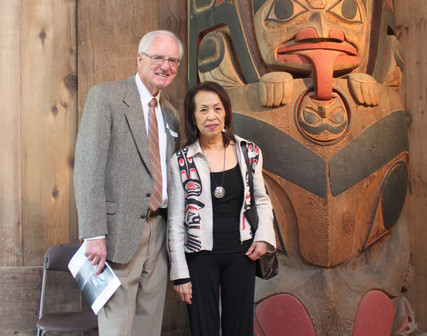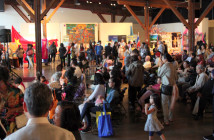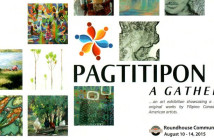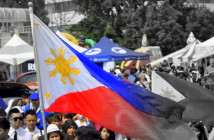Dr. Miguel Tecson vividly recalls his travels thru many years as he speaks to the more than a hundred people attending the event to celebrate the 28 years of his donations of anthropological and archaeological objects to the Museum of Anthropology (MOA) at the University of British Columbia (UBC).
“I followed the famous Silk Road from China to Europe. I went to Central Asia, then a part of Soviet Russia. In exotic named places like Tashkent, Bokhara and Samarkand populated by Mongols and Tartars.
It brought up images of Genghis Khan, the Golden Horde, and Marco Polo on the sea route.
I followed it from China thru Southeast Asia, around India, towards Martaban, Burma up the Persian Gulf to most of Iran; then to Damascus in Syria, down to the East Coast of Africa, in places like Mombasa, Malindi, Gedi, and the beautiful little island of Lamu, an Arabian trading post to Asia for hundreds of years.” Tecson said in his speech.
It is perhaps because of his love for adventure, fascination to the things from the past and finding joy in seeing those familiar but nostalgic pieces that made him and his wife, the late Julia Gonzalez Tecson collect things since they moved to Vancouver in 1970. Dr. Tecson had become a licensed psychiatrist by then.
“I gained a little know-how, made other contacts, acquired small resources but it was Julia who had the good eye so most of what you would see in the museum were her own selections,” Dr. Tecson said.
In 1987, the Tecsons donated to UBC more than 350 pieces of artifacts including pottery, ceramics and carvings. This single biggest collection of artifacts from the Philippines positioned MOA to become a museum world of cultures.
Peppered with mixed reactions from families and friends, Dr. Tecson remembers questions he usually gets: where did you get all these old stuff; how did you fit the large “banga” in a “balikbayan” box; why did you not sell them; why didn’t you give it to me instead of giving it to UBC?
“We thought it would be nice to have a study collection centered on the arts and culture of the Philippines. We felt good having familiar pieces around us. Perhaps we were just sentimental and nostalgic. However, we thought that this is good for the families from Philippines, for the children who came here or were born here and curious about the country where their parents came from.” Dr. Tecson concluded.
- Melissa Remulla-Briones emceed the program with Vancouver-based journalist Mel Tobias.
- Museum of Anthropology Associate Director Moya Waters and Dr. Carol Mayers, Curator Africa/Pacific, Department Head.
- The Rosario Strings performed a medley of songs from around world.

From Left: Retired UBC Professor Prod Laquian delivered the welcome remarks; followed by short greetings from Vancouver Deputy Mayor Andrea Reimer and Philippine Consul General Neil Frank Ferrer. Dr Miguel Tecson looked on.
Photos by Angeli Buccat








